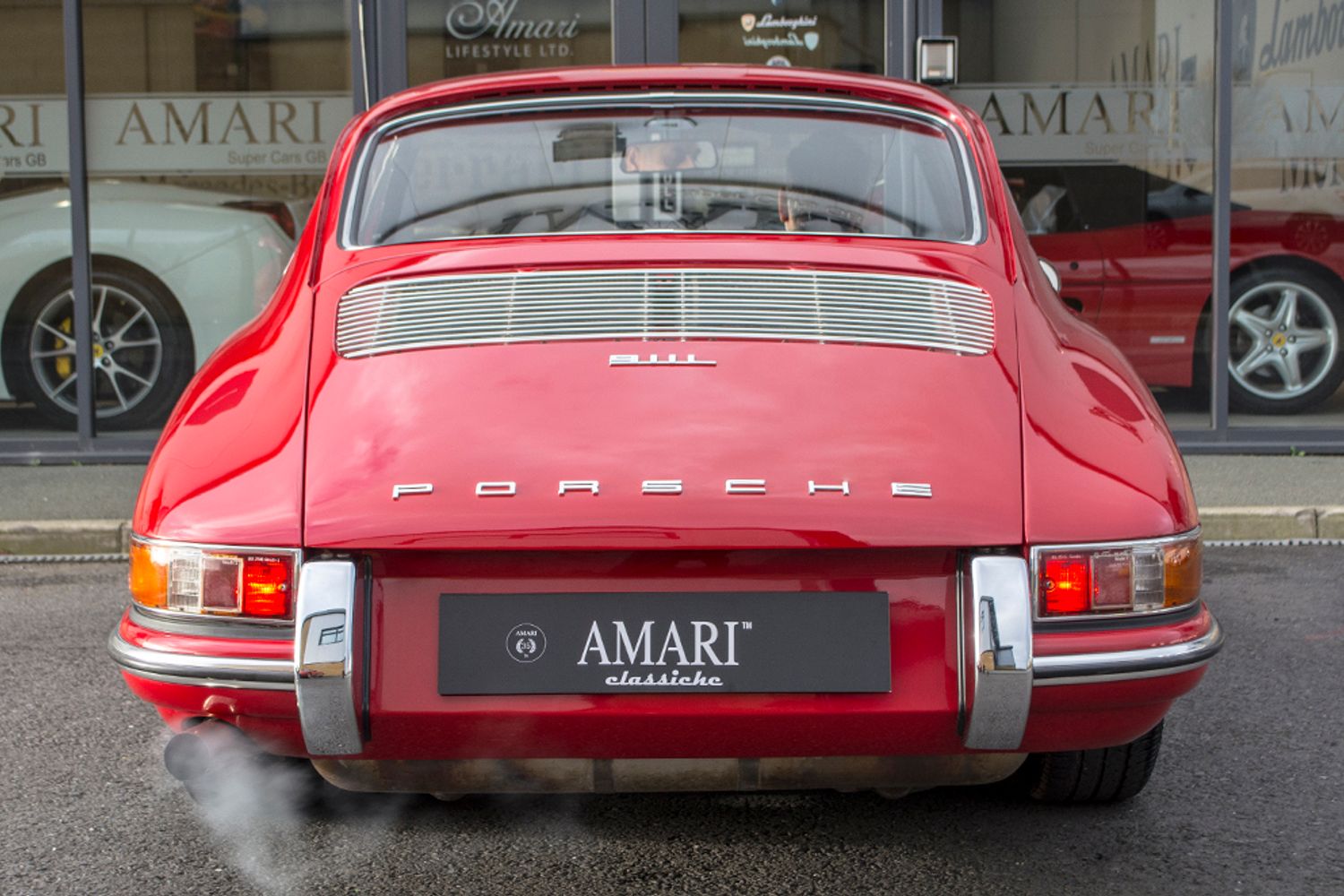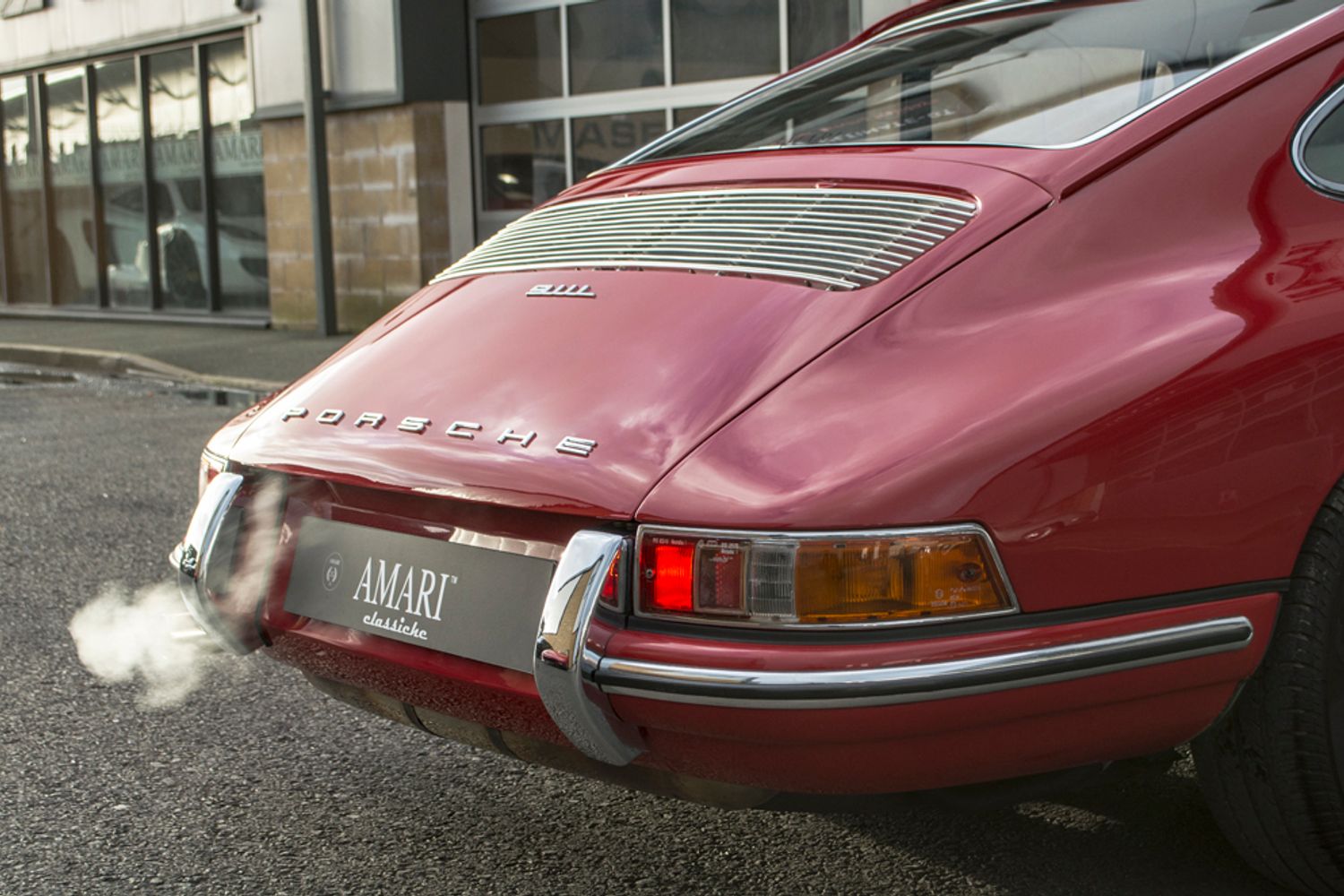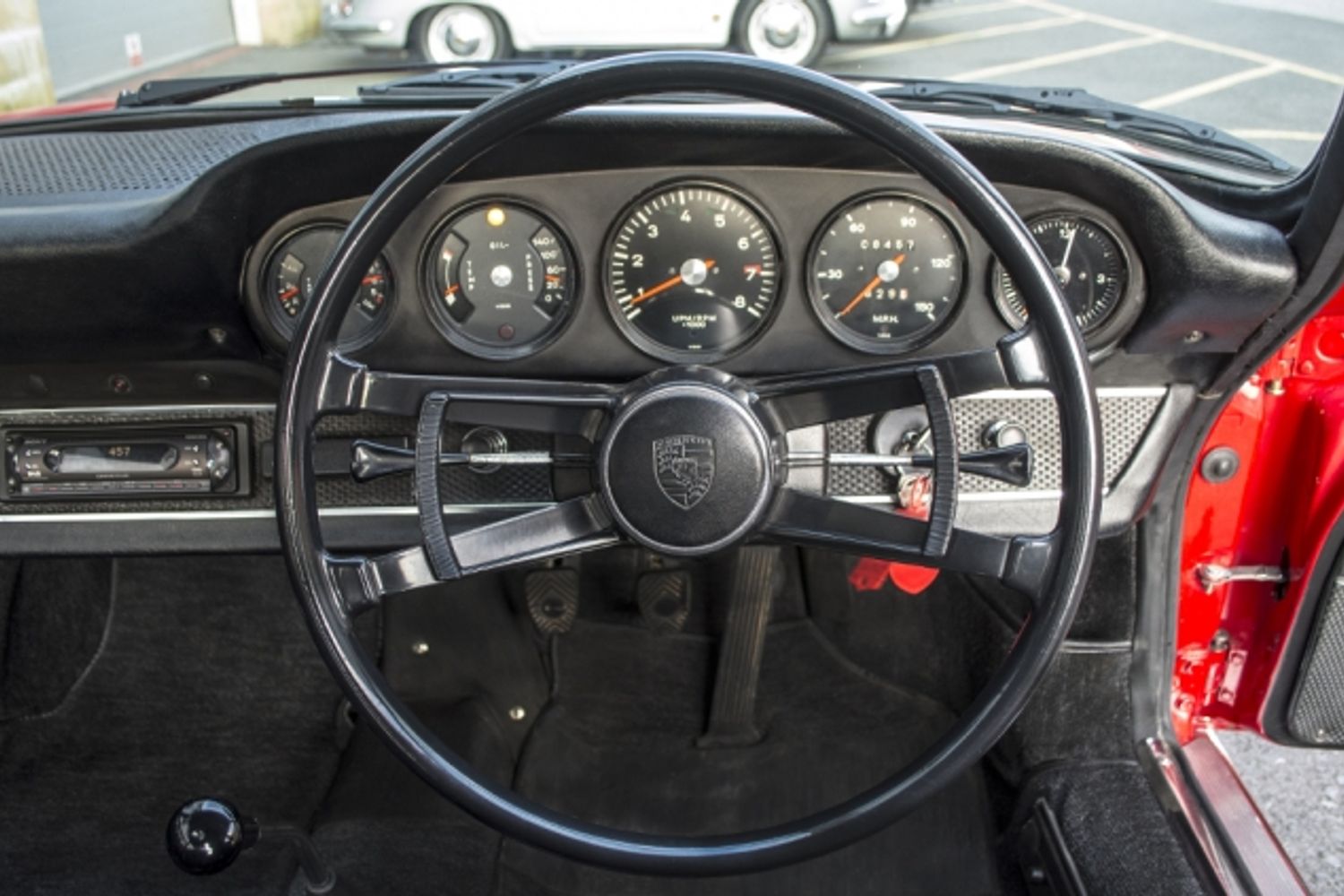Overview
The Porsche 911 Classic, is an Air Cooled engine (1963-1997). The 911 traces its roots to sketches drawn by Ferdinand "Butzi" Porsche in 1959. The Porsche was developed as a more powerful, larger, more comfortable replacement for the Porsche 356, the company's first model. The new car made its public debut at the 1963 Frankfurt Motor Show. The Car was developed with the proof-of-concept twin-fan Type 745 engine.The 130 PS (96 kW; 130 hp) model was launched in 1967 & branded 'The 911L'.
DESCRIPTION
Our piece of Porsche & Automotive history is a 1968 F Registered 911L Short Wheel Base (SWB).
Its production was completed on 12/02/1968, & was registered by the renowned AFN Porsche Centre in Isleworth on 20 March 1968.
The car looks amazing in the Red + Black Leatherette colour combination, though it started life initially in Light Ivory.
The 'crowning glory' of this beautiful car is the coveted 'Porsche Certificate of Authenticity' detailing the 'birth' and component numbers, optional equipment (Sportomatic, Right Hand Drive, Loudspeaker), VIN, Transmission & Engine Numbers.
THIS IS A MATCHING NUMBER CAR!
There is a detailed folder of paper mapping out the extensive provenance, containing communication regarding the matching number confirmation, old MoT Certificates, parts bills, reminders, service bills, the original owner's manual, the service book which was added back in 2004, ......
More importantly and far more pertinent to the position of the car in today's market is the evidence of the extensive 'love and care' the previous owner has bestowed upon this car.
The most note worthy parts of the provenance are:
- a detailed £10,000 Engine Rebuild at a famous restorer of Porsche engines back in 2008, which details detailing all the components and extent of the work carried out;
- a further detailed and reassuringly 'no expense spared' £20,000 Body Restoration at another classic Porsche and bodywork specialist from 2010.
Please note that whilst we have highlighted the above engine and body restorations, they are by no means the only invoices & proofs of work carried out!
The car has since been maintained at various highly regarded specialists, all of with detailed paperwork to support.
The 9 previous owners of the car can each prove the love they had for this car, given the paperwork we have to hand over to the next lucky owner.
The car sits on GoodYear Eagle Tyres all round: 195 x 65 x 15 (91v)
Tyre tread depths:
Front Right: 5mm
Front Left: 5mm
Rear Right: 4mm
Rear Left: 4mm
The car will proceed through the AMARI Classiche process with extensive detailing to the body work, engine, engine bay, interior & wheels.
We will detail all the work we have carried out on photographs and present the extensive paperwork and photographs in a bespoke leather bound folder for the next lucky owner.
We have an extensive history file, owner manual and service records, as well as 1 key
For more information, please call our sales team on 01772 663 777.
Viewing strictly by appointment.
The earliest editions of the 911 had a 130 PS (96 kW) flat-6 engine, in the "boxer" configuration like the 356, air-cooled and rear-mounted, displaced 1991 cc compared with the 356's four-cylinder, 1600 cc unit. The car had four seats although the rear seats are very small, and the car is usually called a 2+2 rather than a four-seater (the 356 was also a 2+2). It was mated to a five-speed manual "Type 901" transmission. The styling was largely by Ferdinand "Butzi" Porsche, son of Ferdinand "Ferry" Porsche. Erwin Komenda, the leader of the Porsche car body construction department, was also involved in the design.
The 356 came to the end of its production life in 1965, but there was still a market for a 4-cylinder car, particularly in the USA. The Porsche 912, introduced the same year, served as a direct replacement. It used the 356's 4-cylinder, 1600 cc, 90 hp (67 kW) engine but wore the 911 bodywork.
In 1966 Porsche introduced the more powerful 911S, the engine's power raised to 160 PS (120 kW; 160 hp). Alloy wheels from Fuchs, in a distinctive 5-leaf design, were offered for the first time. In motorsport at the same time, installed in the mid-engined Porsche 904 and Porsche 906, the engine was developed to 210 PS (154 kW).
In 1967 the Targa version was introduced as a "stop gap" model. The Targa had a stainless steel-clad roll bar, as Porsche had, at one point, thought that the National Highway Traffic Safety Administration (NHTSA) would outlaw fully open convertibles in the US, an important market for the 356. The name "Targa" (which means "shield" in Italian) came from the Targa Florio sports car road race in Sicily, Italy in which Porsche had notable success, with seven victories since 1956, and four more to come until 1973. This last win in the subsequently discontinued event is especially notable as it was scored with a 911 Carrera RS against prototypes entered by Italian factories of Ferrari and Alfa Romeo. The road going Targa was equipped with a removable roof panel and a removable plastic rear window (although a fixed glass version was offered alongside from 1968).




























































